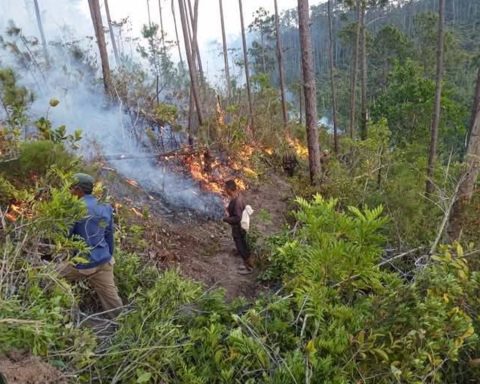Good rainfall records in most of the country, a reduced supply and an active international market invigorate the livestock marketwith an activated demand for replacement that maintains a favorable skinny/fat ratio, still far from the standard of 1.20 to 1.25.
The advance of prices for cattle destined for slaughter is consolidated, with the best steers that reach –and cross– US$ 4.50 per kilo in fourth scale. The fat cow goes from US$4.10 to US$4.20 for the good ones, very heavy.
The commercialization is fluid with an industry that remains a buyer in the first days of poultry slaughter destined for the quota window that begins in February.
Tickets have been shortened. It is not clear how far they will push the meatpacking plants with the values to obtain volume of cattle and sustain the high levels of slaughter, which last week reached 48,271 heads, with 20,460 steers, 20,287 cows and 6,599 heifers, according to data from the National Meat Institute (INAC). It adds more than 146,000 cattle so far this year, with a tendency to extract bellies as a result of the low supply of steers.
The producers gain margin to finish the cattle. Pastures reacted immediately to the rains, with an explosion of greening, and fodder stocks seem assured for the rest of the summer.
The demand for replacement was activated, it exceeds the offer and moves to a recovery in the values with the calves averaging US$2.28, the heifers US$2.12 and the wintering cow US$1.75.
The beginning of the auction season is beginning to set the trends in this sector of the market, where a rapid take-off of values is expected.
The latest references from the Association of Livestock Shippers (ACG) showed a green arrow for practically all categories.
EO
The international market crossed January with positive numbers, with good dynamics and interesting values.
China maintains a moderate demand, 2% above the first weeks of the previous year, and stable valueswithout registering a significant impact for business from Uruguay after the return of Brazil to that market in December, even with strong exports from the neighboring country at the start of the year.
In Europe, values have firmed up in recent weeks with greater dynamics in view of Easter, with deals between US$12,000 and US$13,000 for the Hilton share. The perspective is that the market recovers after the wave of omicron consumption is recomposed from March. In the case of the United States, values are sustained and operations are agile, with placements within the 20,000-ton quota.
The price of the exported ton started the year well up, exceeding US$ 5,000, and with a slight drop in the last week it remains US$ 1,250 above what was paid at the beginning of 2021.
The markets of Japan and South Korea show a higher level of demand than at the beginning of the previous year.
In lanares the offer has loosened. There is good demand, despite less dynamics from abroad, in purchases from China and Brazil. Lamb traded at US$4.06, lamb fell to US$3.95, capon to US$3.80 and sheep to US$3.57 per kilo.
Sheep slaughter fell compared to the previous week to 26,908 animals and was below the volume recorded in the same week last year, at that time with a start to the year with greater operations.
The export price indicator for sheep meat maintains high levels, US$5,373 per ton in the last week, around US$700 above the 2021 average for the same dates.

Carlos Pazos
The activity in the industrial complexes continues to be intense, as during 2021.
















